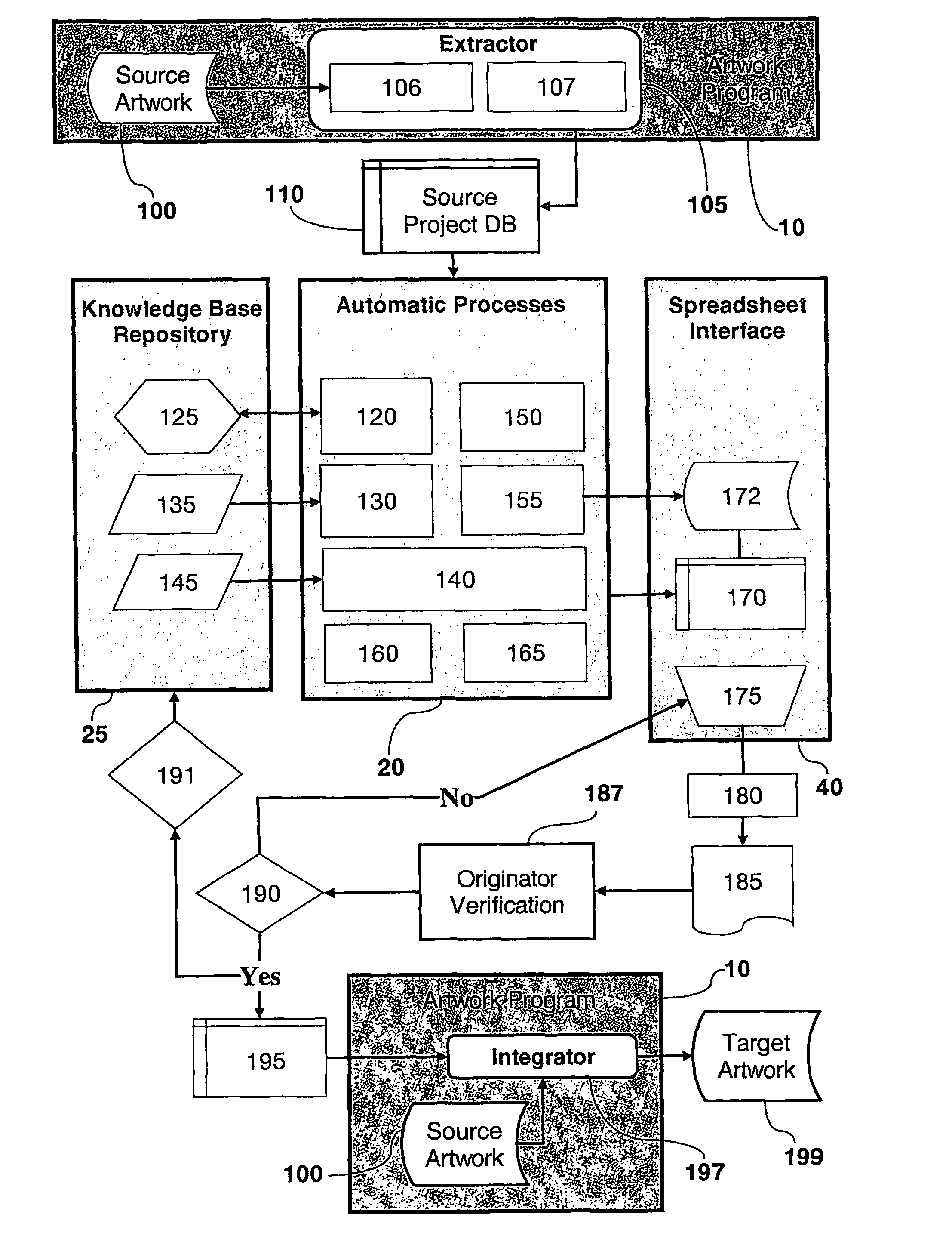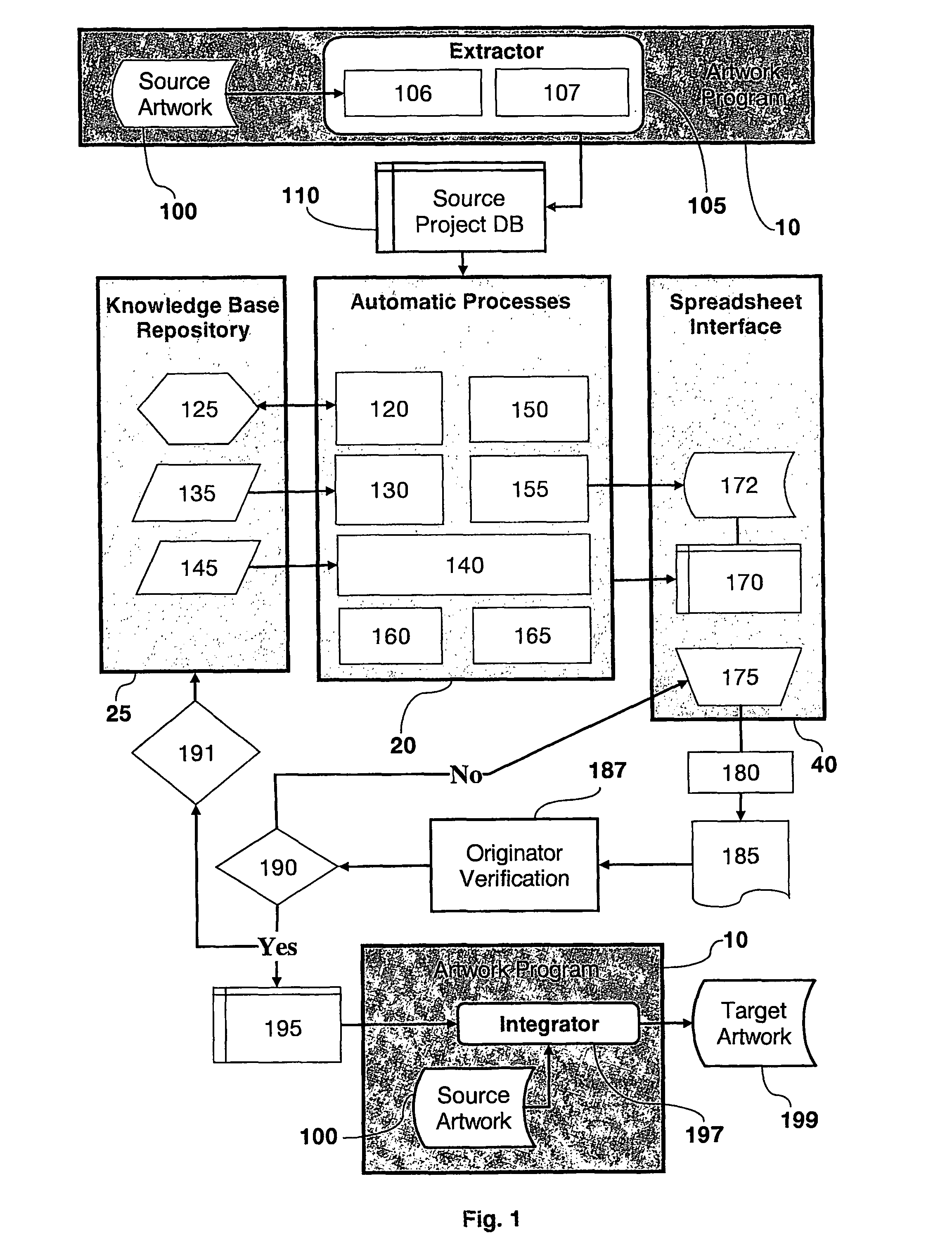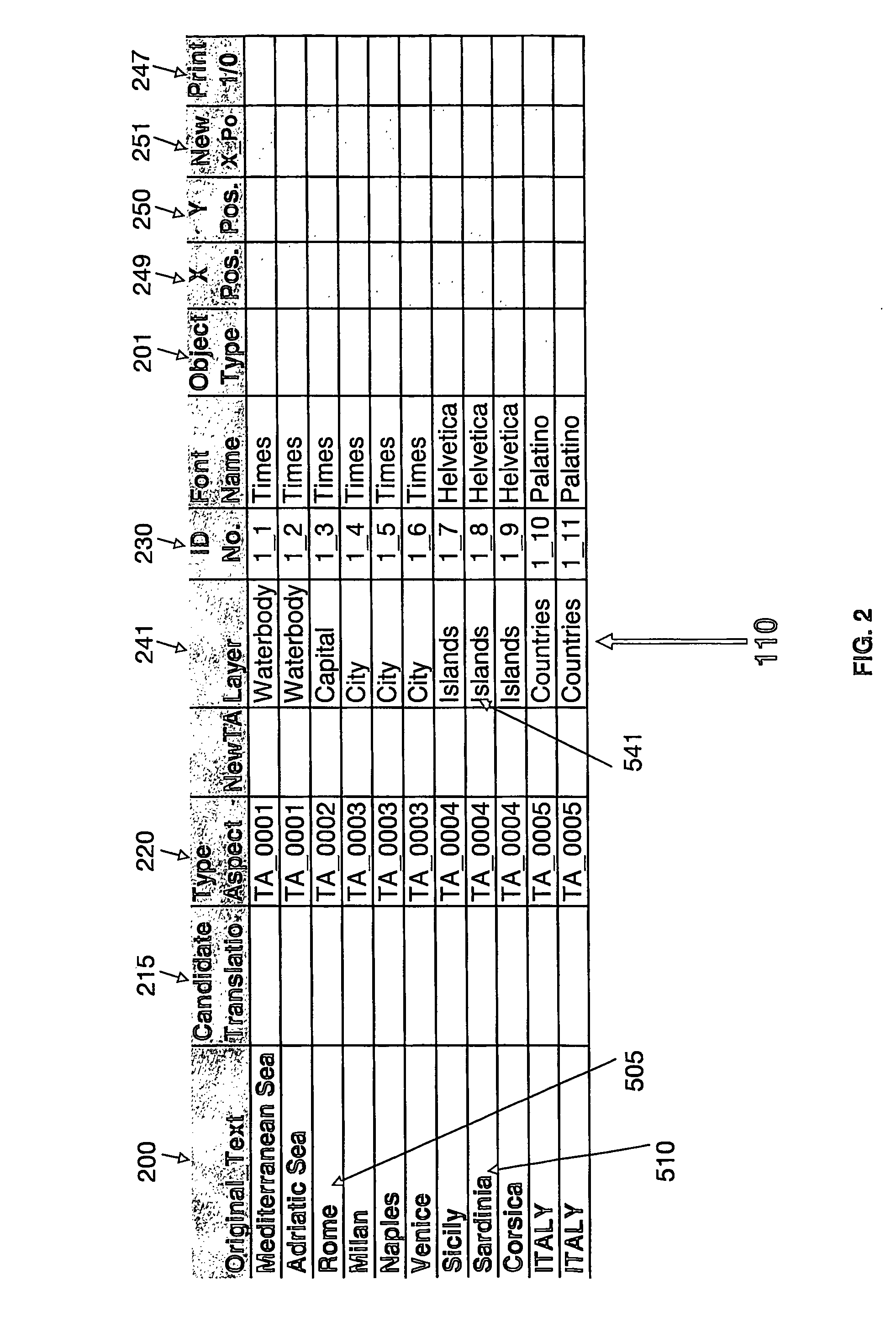Method for manipulation of objects within electronic graphic documents
a technology of electronic graphic documents and objects, applied in the field of document processing methods, can solve problems such as inability to automatically generate files, inability to accurately replace and correct replacements, and spelling errors (“typos”), and achieve the effect of improving the accuracy of automatic generation
- Summary
- Abstract
- Description
- Claims
- Application Information
AI Technical Summary
Benefits of technology
Problems solved by technology
Method used
Image
Examples
second embodiment
[0092] In the second embodiment, the Extraction 105 is performed on a “closed” file, in the native program's file format. (Unlike “open” file, within the Artwork Program, at run-time, as in the first embodiment).
[0093] In this second embodiment an originating Artwork Program 10 is not required. The Extractor 105 scans the “closed” file, which is the same Source Artwork file 100, and performs substantially the same scanning as in the first embodiment, based on through understanding the file structure.
[0094] All steps described above for the first embodiment following the Extraction 105 are performed for this second embodiment by the same tools and methods, with one notable difference, namely:
[0095] The Integrator 198 creates a copy of the “closed” file with all the necessary changes are written in the data, producing a new file with the required manipulations, new layers, etc.
[0096] The disclosed embodiment may be implemented using the Adobe Illustrator, Acrobat PDF, Autocad DXF,...
third embodiment
[0098] This embodiment is implemented within the Artwork Program 10, at run-time.
[0099] FIGS. (7a), (7b) and 8 will show how the methods of invention are applied to graphic objects without text or with minimal text, such as a measuring ruler. To begin, the Designer defines the required “building blocks” for such a ruler, namely a horizontal line 410 defining the base of the ruler, a vertical line 420 for the major divisions (centimeters in this example), another vertical line 430 for marking the 5 mm divisions, and a short vertical line 440 for the smallest divisions (millimeters). Also defined are the numerals for the ruler 450—as text object with its desired text attributes.
[0100] FIG. (8) shows the result of the extraction of this Artwork file into the Source DB. For each column with original property such as x position, y position, length, height etc. there is provided another blank column “new” x position etc. The Designer may duplicate each line corresponding to an object, e...
PUM
 Login to View More
Login to View More Abstract
Description
Claims
Application Information
 Login to View More
Login to View More - R&D
- Intellectual Property
- Life Sciences
- Materials
- Tech Scout
- Unparalleled Data Quality
- Higher Quality Content
- 60% Fewer Hallucinations
Browse by: Latest US Patents, China's latest patents, Technical Efficacy Thesaurus, Application Domain, Technology Topic, Popular Technical Reports.
© 2025 PatSnap. All rights reserved.Legal|Privacy policy|Modern Slavery Act Transparency Statement|Sitemap|About US| Contact US: help@patsnap.com



